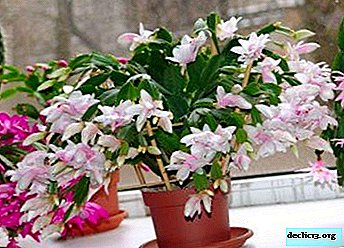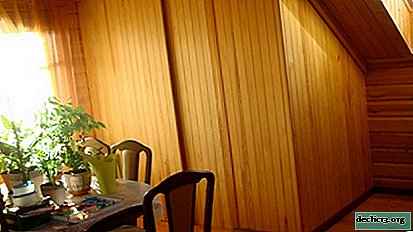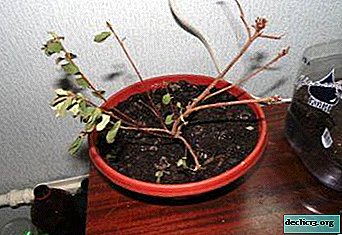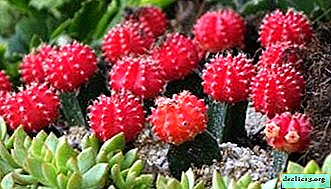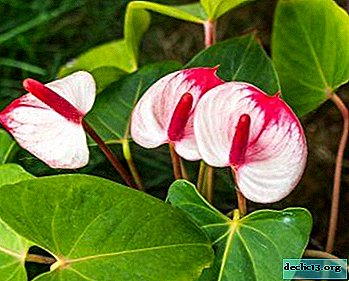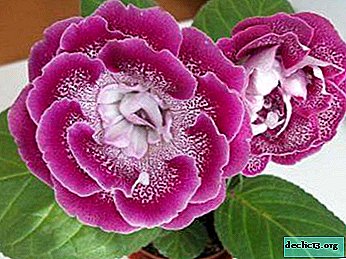What is a yellow phalaenopsis orchid, plant care and photos
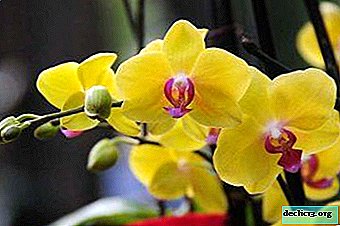
At the moment, there are a large number of hybrid varieties of Phalaenopsis orchids all over the world, which are not whimsical enough in home care for themselves.
Phalaenopsis translates as "moth-like." This name went to him because its petals are very similar to butterflies. Yellow Phalaenopsis is a small hybrid plant with one stem.
What it is?
Phalaenopsis is a genus of epiphytic, and sometimes lithophytic, plant of the Orchidaceae family from Southeast Asia, the Philippines, and northeast Australia.
Description of appearance
The yellow orchid has a well-developed root system. Yellow phalaenopsis leaves up to 6 leaves and they close the stem. Leaflets with a beautiful green tint, oval. Up to 45 centimeters long and up to 10 centimeters wide. Peduncle grows up to 90 centimeters with a hue from green to purple. Gives up to several flowers in one bloom. The aroma is almost not felt.
Flowers of a yellow orchid in diameter from 5 centimeters to 6 centimeters. The petals of this type of orchid are white. The lip of the flower has a similar color - since it is yellow-golden with purple dots. One flower lives for up to one month. Yellow phalaenopsis can bloom year-round.
Yellow orchid has no varieties.
Photo
Further you can familiarize with photos on which the yellow phalaenopsis orchid is represented:





Care
They can easily do without bright light, and can be grown in artificial light. The window sill will be a favorable place in the apartment for yellow phalaenopsiswhose windows face both west and east.
With excessive light, burns and brown spots on the leaves may appear. It should be watered twice a month. The bright green color at the roots of the plant is a sign of a healthy root system.
REFERENCE! Silver color indicates an insufficient amount of moisture, and a brown tint tells about a large amount of moisture in the plant and this leads to rotting at the roots.In summer, it is necessary to spray the plant. This plant will grow well and develop at room temperature. In winter, the temperature should be in the house from 14 to 20 degrees Celsius. Small temperature differences help in flowering plants.
Breeding
- Propagation of orchids by cuttings. To do this, you need to take an adult phalaenopsis with a socket, which has from 6 to 8 leaves. After flowering, it is necessary to cut off the top of the plant and cut into a couple of parts so that all buds are from 5 centimeters to 8 centimeters. Treat all ends of the cuttings with charcoal and close in a transparent container. After the roots appear, after 15 days you can transplant them into separate pots.
- Reproduction by dividing the roots is carried out in early spring. During this period, the plant is ready for active growth. To do this, gently pull the rhizome of the plant out of its pot. Next, we divide the rhizome into two parts in advance with a disinfected knife, so that from two to three bulbs remain on it. Treat the cut points of the plant with charcoal in order to sanitize. Then transplant them into different pots and carefully water them. Fresh, new greens will soon appear.
 Cherenkov method. This method is quite common among many gardeners and florists. In this way, monopodial plants will best propagate. For this, it is necessary to find the part of the plant on which the air roots formed and cut it off. The soil must be prepared in advance. Caring for the plant is necessary as an adult. Then put in a rather humid place - - this will help to cope with the stress of the plant.
Cherenkov method. This method is quite common among many gardeners and florists. In this way, monopodial plants will best propagate. For this, it is necessary to find the part of the plant on which the air roots formed and cut it off. The soil must be prepared in advance. Caring for the plant is necessary as an adult. Then put in a rather humid place - - this will help to cope with the stress of the plant.
Step-by-step transplant instructions
A healthy plant does not need a transplant at all. It is necessary to put the pot with the Phalaenopsis orchid in a basin filled with water for 30-40 minutes, covering the entire surface of the pot with a net so that pieces of bark do not float away. This is to ensure that the plant has parasites and pests.
If the substrate has deteriorated, then the plant should be replanted 2-3 times a year. After a certain period of time, the substrate begins to smell like acid, it becomes brittle.
Typically, a phalaenopsis transplant begins after flowering. Phalaenopsis orchid is a feature of the growth and development of phalaenopsia. This orchid must have a good, fresh, and also clean substrate in order for the phalaenopsis to grow and develop.
Top dressing
It is best to start fertilizing yellow phalaenopsis after the first day of flowering in the plant has passed. It happens that after fertilizing the orchids begin to fade flowers. This is due to the fact that at the beginning the plant gets used to a new place and experiences stress.
The Phalaenopsis orchid purchased at the store should only be fertilized after flowering.If the orchid blooms for a long time, then you need to feed already during flowering. If you use complex fertilizer for indoor plants, you need to greatly reduce the dose of fertilizer, you must make 25 percent of the fertilizer from the dosage indicated on the label.
Pests and diseases
On phalaenopsis orchids, as well as on other plants, there are pests:
- Scaffolds.
- Aphid.
- Mealybugs.
- Spider mite.
- Thrips.
- Fools (nails).
- Nematodes.
- Woodlice.
Orchids are among the largest of the family of monocotyledonous plants. They also belong to the kingdom of the "plant", eukaryotes. The plant got its name from the shape of the rhizome, as it resembles an egg (a name from ancient Greek). For the former USSR and present Russia, 419 species or 49 genera of orchids are given. The orchid family received an aristocratic name in plants.
Orchid is a national symbol in many countries because of its extraordinary beauty. In Mexico, when the ancient monks first saw this flower, they considered it the embodiment of the holy spirit and now it is used in worship. Tribes of the Indians to this day worship her.

 Cherenkov method. This method is quite common among many gardeners and florists. In this way, monopodial plants will best propagate. For this, it is necessary to find the part of the plant on which the air roots formed and cut it off. The soil must be prepared in advance. Caring for the plant is necessary as an adult. Then put in a rather humid place - - this will help to cope with the stress of the plant.
Cherenkov method. This method is quite common among many gardeners and florists. In this way, monopodial plants will best propagate. For this, it is necessary to find the part of the plant on which the air roots formed and cut it off. The soil must be prepared in advance. Caring for the plant is necessary as an adult. Then put in a rather humid place - - this will help to cope with the stress of the plant.
